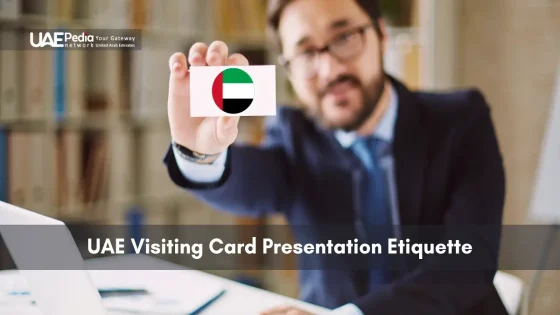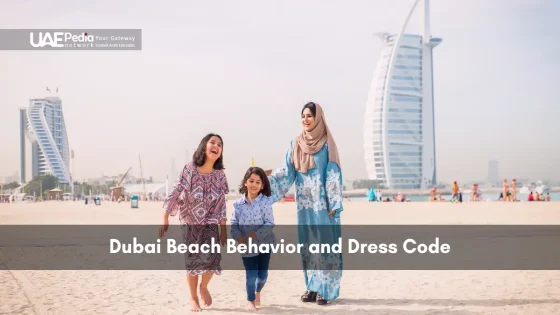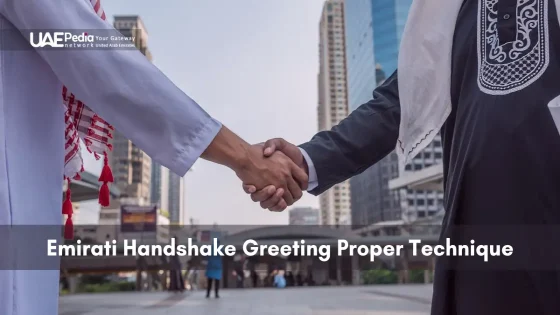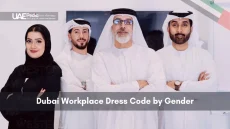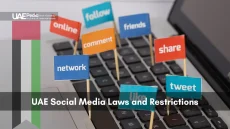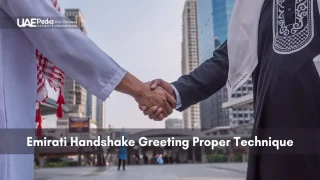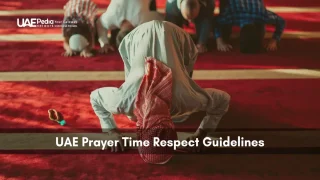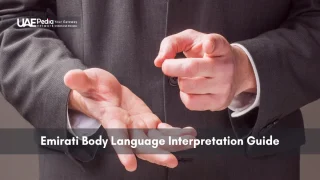What if a simple exchange could determine whether your next collaboration thrives or stalls? In the Middle East’s buzzing hubs, that small rectangle in your pocket holds more power than you might expect. We’ve watched professionals transform awkward introductions into lasting partnerships—all by mastering the unspoken rules of sharing credentials.
Here, these materials aren’t just contact details. They’re tangible symbols of your professionalism and cultural awareness. Many local partners appreciate dual-language designs—Arabic on one side, English on the other—to bridge communication and show intentionality. The act of handing them over matters too: using your right hand, ensuring crisp corners, and avoiding rushed gestures.
Why does this matter? In a region where tradition meets innovation, every detail becomes part of your story. A smudged logo or poorly translated title might whisper carelessness, while thoughtful preparation shouts respect. We’ve seen how a well-crafted approach builds trust before the first coffee arrives.
In UAE business settings, the presentation of visiting cards serves as a formal extension of professional identity and cultural competence. Cards are produced in dual-language format (Arabic and English) on high-quality stock, with precise typography and flawless translations. During exchanges, materials must be offered palm-up using the right hand, held by the corners to avoid fingerprints, and oriented so Arabic script faces the recipient. Maintaining crisp edges and avoiding hurried gestures conveys attention to detail and respect for regional customs.
Effective timing and protocol further reinforce credibility. Cards are shared after initial greetings conclude and senior attendees initiate the exchange, with two-handed offers signaling deference when appropriate. Observing where recipients place received cards—prominently on the table or tucked away—provides real-time feedback on engagement. Adhering to these procedures transforms a routine contact-sharing moment into a trust-building interaction aligned with UAE Visiting Card Presentation Etiquette.
- Credentials act as silent ambassadors of your brand’s credibility
- Bilingual designs demonstrate commitment to clear communication
- Presentation methods reflect cultural sensitivity and attention to detail
Understanding UAE Business Culture and Etiquette
In a land where desert traditions meet skyscraper innovation, every business gesture tells a story. Dubai’s corporate culture thrives on balancing deep-rooted Islamic values with global efficiency. Punctuality here isn’t just about clocks—it’s a tangible sign of respect that opens doors.
Where Heritage Meets Hypergrowth
Friday sermons echo through conference rooms adapting to Sunday workweeks. During Ramadan, meetings often shift to evenings after iftar meals. Yet tech startups buzz with Silicon Valley energy between prayer times. This cultural blend creates unique rules:
| Aspect | Traditional Approach | Modern Practice |
|---|---|---|
| Meetings | Begin with 15 minutes of personal conversation | Strict adherence to 45-minute video calls |
| Negotiations | Building trust over multiple coffees | Data dashboards deciding deals |
| Communication | Respectful indirectness | Transparent Slack channels |
The Currency of Connection
Business relationships here grow through consistent effort. A partner might test your commitment by rescheduling meetings thrice—not from flakiness, but to observe your patience. When exchanging documents, using your right hand shows awareness of regional customs.
“We remember who asked about our family before discussing contracts.”
Morning meetings often start with Arabic coffee service—declining it is like refusing a handshake. Yet by afternoon, you’ll see executives blitz through agendas with New York precision. Master this rhythm, and you’ll unlock more than deals: you’ll gain trusted allies.
Read More:
The Importance of Business Cards in the UAE Market
That slim rectangle in your pocket? It’s your first handshake in the Gulf’s boardrooms. Professionals here view credentials as extensions of personal reputation—meticulously designed, intentionally shared.
Silent Handshakes Speak Loudest
In this region, exchanging materials isn’t transactional. It’s ritual. We’ve watched partnerships form over the way someone pauses to study a title before tucking it carefully into their wallet. A recent survey found 83% of executives form lasting impressions during this 10-second exchange.
| Aspect | Traditional Approach | Modern Practice |
|---|---|---|
| First Impressions | Hand-delivered with both hands | QR codes alongside physical copies |
| Relationship Building | Weekly follow-up calls | LinkedIn connections within 24 hours |
| Follow-Up | Formal letters | Brief WhatsApp voice notes |
“My gold standard? A colleague who learned three Arabic phrases to present his credentials. That effort opened doors no email ever could.”
Always extend materials with your right hand—left-handed gestures accidentally signal disregard. Keep corners crisp, translations flawless. Watch how local partners handle yours; some place it prominently on the table as a sign of engagement.
This business culture thrives on subtlety. A coffee stain becomes a metaphor for carelessness. A bilingual design? That’s the universal language of respect. Master these exchanges, and you’re not just sharing contact details—you’re building bridges.
Dos and Don’ts for UAE Visiting Card Presentation Etiquette
Ever handed someone a folded napkin instead of credentials? In Gulf meetings, that’s how rushed exchanges feel. Nail these moves, and you’ll turn routine swaps into relationship-building moments.
Proper Hand Usage and Card Orientation
Your right hand isn’t just dominant—it’s culturally significant. Always extend materials palm-up, Arabic text facing the recipient. We’ve seen partners pause to rotate poorly oriented items, a silent correction that dims first impressions.
- Rotate bilingual designs to showcase local language prominently
- Use two fingers to hold corners, avoiding thumbprints on names
- Pause for eye contact before releasing
What to Avoid During Exchanges
Left-handed gestures accidentally signal haste. Never toss materials onto tables or stuff them into pockets mid-conversation. One logistics CEO shared:
“When someone glances at my title then slides it under their phone? That’s our last meeting.”
- Don’t interrupt hierarchy—offer to senior people first
- Avoid discussing details while handling credentials
- Never write notes on received items
Watch where others place your materials. Desk placement often signals interest level—front-and-center means engaged, tucked under notebooks suggests indifference. Master these nuances, and you’ll transform paper slips into opportunities.
Step-by-Step Guide to Presenting Your Business Card
Picture this: a boardroom where every handshake carries unspoken meaning. Your materials aren’t just paper—they’re cultural handshakes in physical form. Let’s walk through making yours count.
Preparing Your Card for International Settings
Start with design. Bilingual layouts aren’t optional here—they’re bridges. English on one side, Arabic on the other shows you’ve done homework. Use heavyweight stock that feels substantial. A Dubai-based HR director once told us:
“Flimsy materials make me question partnership durability.”
| Element | Traditional Expectation | Global Adaptation |
|---|---|---|
| Font Size | Larger Arabic script for readability | Balanced typography across both sides |
| Contact Info | Office landline prioritized | WhatsApp/Teams handles added |
| Color Scheme | Gold accents for prestige | Brand colors with metallic highlights |
Double-check translations. A misplaced vowel in Arabic can accidentally turn “consultant” into “chaos creator.” True story—we’ve seen it happen.
Timing Your Exchange at Meetings
Watch the room’s rhythm. Present too early, you seem overeager. Too late, you’ve missed the moment. Best practice? Wait until:
- Initial greetings conclude
- Senior members initiate exchanges
- Tea or coffee service begins
Hold materials with both hands when offering—it signals respect. If receiving first, study it briefly before tucking it away neatly. One tech founder shared:
“I knew we’d partner when they paused to read my title aloud—that attention matters here.”
Remember: In global collaborations, your materials speak before you do. Make every crease intentional, every word purposeful.
Crafting a Business Card That Resonates
Imagine your credentials as a visual handshake—a design that bridges cultures before a word is spoken. In the Middle East’s fast-paced hubs, every curve and character on your materials whispers volumes about your cultural fluency.
Bilingual Design Considerations
Dual-language layouts aren’t just practical—they’re relationship starters. Arabic script flowing alongside English text shows you value clear communication. One Dubai designer shared:
“The best cards feel like mini-art pieces—functional yet respectful of our region’s love for beauty.”
| Design Element | Cultural Significance | Modern Solution |
|---|---|---|
| Typography | Arabic calligraphy shows heritage appreciation | Clean sans-serif for digital readability |
| Color Palette | Gold symbolizes prosperity | Brand colors with metallic accents |
| Information Hierarchy | Job title prominence signals respect | QR codes for instant contact saving |
Balance tradition with innovation. Heavyweight paper stock conveys permanence, while embedded social media handles nod to tech-savvy networking. Avoid overcrowding—white space lets designs breathe.
Remember: In Middle Eastern meetings, your materials often linger on conference tables long after you leave. Make them memorable through thoughtful details—a textured finish, spot UV accents, or subtle geometric patterns echoing local architecture.
Navigating Networking Events and Formal Meetings
Ever walked into a buzzing conference hall where every handshake could spark a breakthrough? In global business hubs, your approach to exchanging credentials shapes opportunities before discussions even begin. Whether at intimate coffee chats or tech summits, these moments build bridges—or burn them quietly.
Exchanging Cards at Conferences
Conference etiquette blends speed with respect. A Dubai-based event planner shared:
“I judge potential partners by how they handle materials during chaos. Rushed grabs? Red flag. Pausing to read details? Instant trust.”
| Event Type | Trust-Builder | Common Mistake |
|---|---|---|
| Coffee Breaks | Personalized comment on their role | Multitasking while exchanging |
| Panel Discussions | Discreetly offering after Q&A | Interrupting speakers mid-session |
| Gala Dinners | Using company-branded holders | Forgetting dietary code restrictions |
Align your actions with the company’s code for international conduct. Senior executives often watch how junior staff present materials—it reflects team training quality. Three quick tips:
- Adjust your role: Listen more at investor meetups, lead conversations at trade shows
- Keep materials pristine—creased corners suggest rushed preparation
- Note cultural codes: Some regions prefer digital exchanges post-event
At a recent fintech summit, a startup CEO gained three investors simply by memorizing their LinkedIn headlines before swapping details. That’s the power of intentional networking—where every exchange cements professional trust.
Respectful Communication and Gestures in the UAE
Ever noticed how a single gesture can build bridges or burn them silently? In Gulf business culture, your first move sets the tone. Let’s explore how greetings and titles shape professional trust here.
Handshakes and Greetings
A firm handshake isn’t just polite—it’s your opening statement. Use your right hand, maintain eye contact, and avoid overly tight grips. One hospitality leader shared:
“A two-second pause before releasing shows you’re present, not just going through motions.”
| Gesture | Traditional Approach | Modern Adaptation |
|---|---|---|
| Handshake Pressure | Light grip showing humility | Confident but brief squeeze |
| Eye Contact | Modest downward glance | Direct gaze with smile |
| Greeting Words | “As-salamu alaykum” first | Bilingual “Hello/Hala” mix |
Using Titles and Respectful Tone
Names carry weight here. Always lead with titles—”Dr. Ali” or “Sheikha Noor”—until invited to use first names. A tech founder recalled:
- Mention academic honors: “Professor Ahmed” not “Mr.”
- Pronounce names slowly, asking clarification if needed
- Reference family businesses: “Your father’s legacy inspires many”
Adjust your tone like desert light—warm but not harsh. During negotiations, measured pauses show thoughtfulness. Three quick tips:
| Situation | Traditional Expectation | Contemporary Style |
|---|---|---|
| First Meeting | Formal “Esteemed colleague” | “Valued partner” with hand on heart |
| Follow-Up | Poetic email openings | Brief voice notes affirming rapport |
Master these exchanges, and you’ll find doors opening faster than a sandstorm clears. Respect here isn’t just manners—it’s the currency of lasting connection.
Incorporating Dress Code and Personal Presentation
Think of your suit as a cultural handshake—stitched from respect and tailored to local expectations. In the Emirates, what you wear communicates before you speak. A Dubai-based HR director once confided:
“When someone’s attire matches their credentials’ quality, I trust their attention to detail.”
Choosing Appropriate Business Attire
First impressions here blend fabric choices with cultural awareness. Opt for lightweight suits in neutral tones—beige whispers practicality, navy shouts confidence. Women often choose below-knee dresses or tailored separates. Avoid sheer fabrics or tight cuts.
Hierarchy matters. Junior staff might sport crisp shirts without jackets, while executives prefer bespoke suits. Watch for subtle cues:
| Role | Traditional Expectation | Contemporary Shift |
|---|---|---|
| Startup Founders | Formal dishdasha for local partners | Blazers over smart casual |
| Corporate Leaders | Full business suits | Luxury tech accessories as status symbols |
Three quick tips for cross-cultural polish:
- Roll sleeves only after others do
- Keep logos discreet—flashy brands distract
- Match leathers: belts to shoes, briefcases to portfolios
Remember—your appearance amplifies your business card etiquette. A rumpled collar undermines even the finest credentials. In the United Arab Emirates, visual harmony between personal style and professional materials builds unspoken trust.
Final Reflections on Mastering UAE Business Protocol
In the dance of global partnerships, every step matters—from your handshake to your credentials. What we’ve learned? Success here thrives on blending preparation with cultural awareness. Those crisp bilingual materials aren’t just paper—they’re bridges connecting traditions to tomorrow’s deals.
Make sure your toolkit shines. Dress code choices mirror professional respect—think tailored suits over casual wear. During business meetings, how you handle exchanges speaks louder than job titles. One side displays your global reach, the other honors regional roots.
Three quick takeaways for lasting impact:
- Design materials that work harder than you do—dual-language, flawless translations
- Let actions whisper respect: right-hand exchanges, studied glances before pocketing
- Sync personal style with local expectations—fabric choices matter as much as firm handshakes
Local business thrives on these unspoken rules. Whether sealing deals in boardrooms or networking at conferences, your attention to detail builds trust that outlasts any contract. Keep refining, keep learning—every polished gesture writes your next opportunity.
Absolutely! Always present and receive cards with your right hand—it’s a sign of respect in Emirati culture. Even if you’re left-handed, this small gesture shows you’ve done your homework on local customs.
While not mandatory, bilingual cards (English + Arabic) earn instant goodwill. They signal cultural awareness and make your details accessible. Keep Arabic text on the right side of dual-language cards—it mirrors the region’s reading direction.
A> Think polished professionalism. Men: opt for tailored suits in Dubai’s financial districts. Women: choose modest hemlines and covered shoulders. Your card might be pristine, but a mismatched outfit could overshadow it at Abu Dhabi boardroom meetings.
Wait for cues! In formal settings, senior executives often exchange first. At conferences, a post-handshake exchange flows naturally. Pro tip: Keep cards visible (but not fanned out) during Dubai Expo-style networking—it invites organic connections.
Tread carefully. Writing on a card’s face might imply disregard. Instead, discreetly note details on paper or your phone later. Emirati professionals value cards as extensions of personal reputation—handle them like fragile artifacts.
Hierarchy shapes interactions here. Highlight your highest credential (Dr., Eng., CEO) prominently. When meeting government liaisons in Sharjah or Ras Al Khaimah, lead with formal titles—it shortcuts trust-building in this relationship-driven market.
Never toss cards into pockets or bags immediately. Take 3 seconds to review details—this silent praise says “I value this connection.” Also, skip the left-handed shuffle; even ambidextrous moves can raise eyebrows at Ajman networking mixers.
